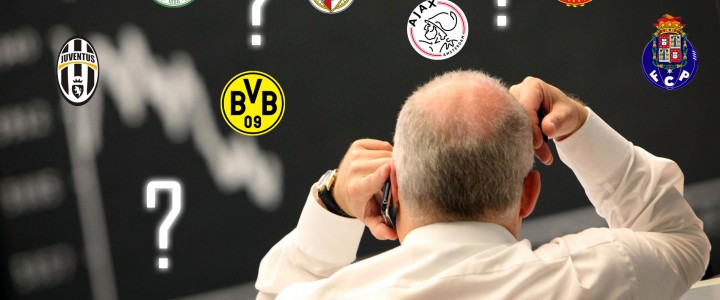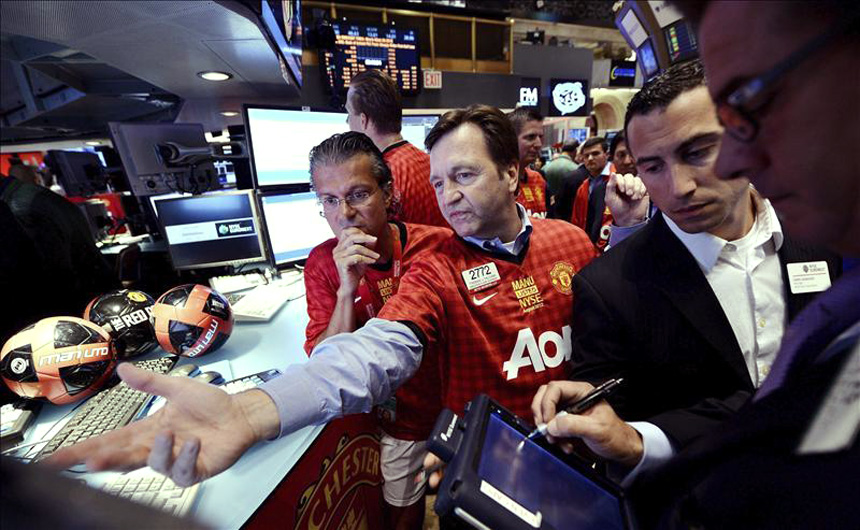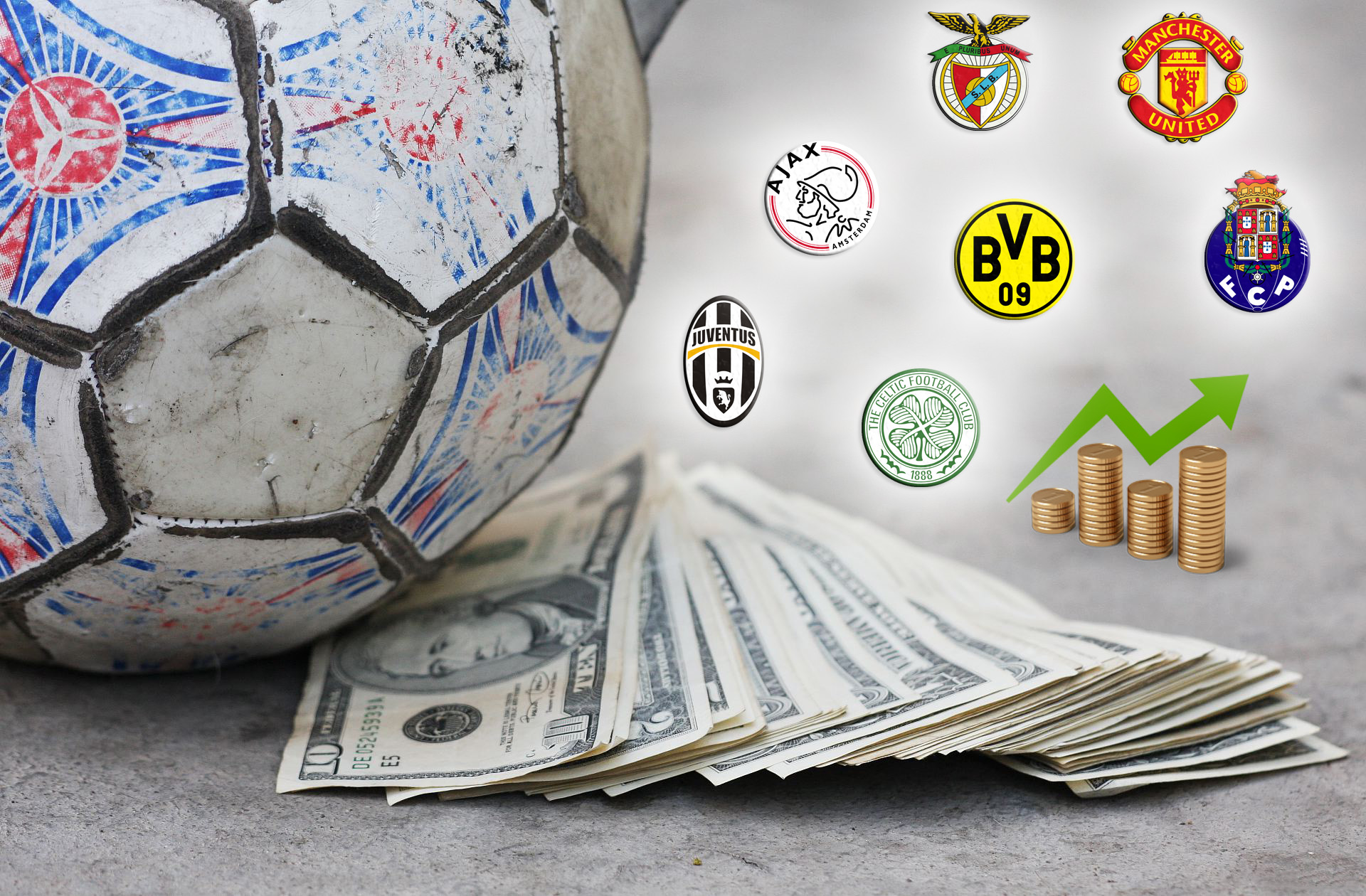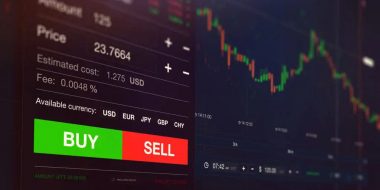Over the last years we’ve seen plenty of the big clubs joining the stock markets. Seeking the much-needed capital investment to deal with typical prohibitive expenses and their superstars players’ millionaires wages, a good amount of the top clubs across Europe is these days available for any investor to pick them for their own stocks portfolio. However, judging by the past 12-months records it doesn’t seem as if purchasing football clubs stocks might be a good idea. Let’s see why…
During the current football season that is approaching its end (2012-2013) and that started on the 1st of July of 2012, the “Stoxx Europe Football“, a stock index that comprises the 22 European football clubs listed in the stock markets, has registered an overall loss around -7.3%.
This is not exactly a new situation. Just the season before (2011-2012), this same index had already suffered a -37.43% loss. In the other hand, the 2010-2011 season was the “golden year” for football clubs across the stock markets, with the index value rising 26.11% for that period. One of the major problems underlying to the investment in football clubs’ stocks has to do with the extremely low liquidity of these stocks, as well as their own instability and volatility coming from the teams’ results on the pitch, weekend after weekend.
This season, we’ve seen two more clubs joining this index: Manchester United, who had already been at the London stock market and that has returned last August, but this time in Wall Street, and Glasgow Rangers, who joined UK’s Footsie last December. Since its arrival to the London stock market and following it’s relegation to the Scottish 4th Division, Glasgow Rangers‘ shares have suffered a big hit, with losses above -25%. A considerably better performance was obtained by Manchester United’s shares though, which have risen roughly 27.64%, in a football season where the club not only won the English Premier League but also saw its charismatic and legendary coach Sir Alex Ferguson announcing his retirement.
However, not even the positive effect coming in from Manchester United‘s entrance to the New York stock market seems to have helped the STOXX Europe Football index to trick its apparent grim fate. As we can see from the table provided below, a good part of the clubs included in this index come from Denmark (5) and Turkey (4). The last ones could be pointed precisely as the main responsible for the index big fall, since all the four Turkish clubs ended losing value in two digit numbers (Besiktas: -12.86%, Fenerbachçe: -22.08%, Galatasaray: -35,15%, Trabzonspor: -43,60%).
In the other hand, there were also a few examples of football clubs stocks that have seen its value increasing. Celtic Glasgow‘s shares rose 68,48% after having won the domestic league championship and the Scottish Cup last weekend, while Borussia Dortmund, runner-up for the UEFA Champions League, registered a 46.59% positive climb. Other emblematic football teams like AS Roma or Lazio, also saw their shares climbing 32.60% and 24.38% respectively. The Italian champions Juventus FC and the Portuguese giants SL Benfica, followed the same positive trend with stocks shifting positively around 11.41% and 19.35% figures.
As for the Portuguese champions, F.C. Porto, they present us a good proof of how unpredictable it can turn out to be to invest on football clubs through the stock markets. Despite their success in the Portuguese League, Pinto da Costa‘s club ended the current season falling roughly -10% in the market. Not even the recent sellings of James Rodríguez and João Moutinho in a 70 million euros transfer pack to the newly promoted and very wealthy French side AS Monaco, seem to have been enough to turn around things for investors. A more frightening observation would surely be the -88% value loss in F.C. Porto‘s shares, that is if we do lock the beginning of the analysis period on the day the club has lifted their last UEFA Champions League trophy, on May 26, 2004. Making it more simple to understand, if you had purchased 1.000€ of F.C. Porto‘s shares the day after they won the UEFA Champions League back in 2004, you would be left with 120€ today!
Thinking about investing some money in football teams listed in the stock markets? You might better do it for passionate or emotional reasons, since financial indicators and reason might suggest otherwise…
STOXX Europe Football Index – Components list:
| # | Football Club Name | Sector | Country |
| 1 | AALBORG BOLDSPILKLUB | Travel & Leisure | DK |
| 2 | AFC AJAX | Travel & Leisure | NL |
| 3 | AIK FOOTBALL | Travel & Leisure | SE |
| 4 | ARHUS ELITE | Travel & Leisure | DK |
| 5 | AS ROMA | Travel & Leisure | IT |
| 6 | BESIKTAS | Travel & Leisure | TR |
| 7 | BORUSSIA DORTMUND | Travel & Leisure | DE |
| 8 | BRONDBY IF B | Travel & Leisure | DK |
| 9 | CELTIC | Travel & Leisure | GB |
| 10 | FENERBAHCE SPORTIF HIZMET | Travel & Leisure | TR |
| 11 | FUTEBOL CLUBE DO PORTO | Travel & Leisure | PT |
| 12 | GALATASARAY | Travel & Leisure | TR |
| 13 | JUVENTUS | Travel & Leisure | IT |
| 14 | LAZIO | Travel & Leisure | IT |
| 15 | OLYMPIQUE LYONNAIS | Travel & Leisure | FR |
| 16 | PARKEN SPORT & ENTERTAINMENT | Travel & Leisure | DK |
| 17 | Rangers Int Football Club | Travel & Leisure | GB |
| 18 | RUCH CHORZOW | Travel & Leisure | PL |
| 19 | SILKEBORG | Travel & Leisure | DK |
| 20 | SPORT LISBOA E BENFICA | Travel & Leisure | PT |
| 21 | SPORTING | Travel & Leisure | PT |
| 22 | TRABZONSPOR SPORTIF YATIR | Travel & Leisure | TR |
Sources: jornaldenegocios.pt / bloomberg.com / yahoo.finance.com
Related Posts
« The most lucrative sports event in the World Real Madrid new jersey for 2013-2014 and highest sponsorship deal ever »












